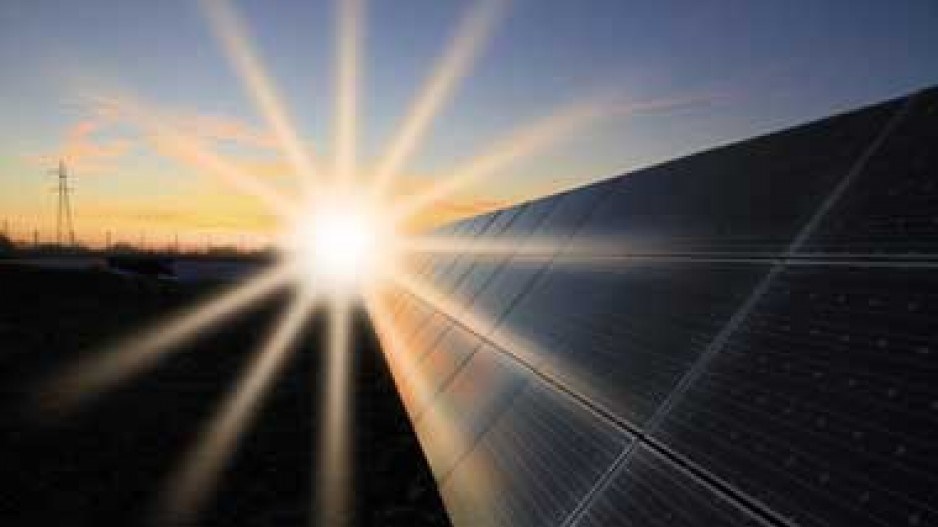Its shares are worth virtually nothing, it labours under a $126 million deficit and faces delisting on the Toronto Stock Exchange. Prospects for Day4 Energy (TSX:DFE) and much of the global solar power sector are dim and getting dimmer.
Thanks to Chinese manufacturers dominating a market that was propped up by government subsidies – subsidies that are evaporating in the wake of the European financial crisis – a growing number of American and European photovoltaic (PV) makers over the last year have filed for bankruptcy.
“It doesn’t look good, and the sad thing is that it was all completely predictable,” said Ross McKitrick, a Guelph University professor and Fraser Institute senior fellow who specializes in environmental economics.
Day4’s shares sunk below $0.02 last week, and its market cap shrank to below the $1 million mark, as investors dumped the company’s stock on the news the TSX would delist the company by August if it fails to meet listing requirements.
In an attempt to staunch the bleeding, Day4 has sold its ecoTec GmbH subsidiary and is reducing its staff to 50 employees from 132.
The writing has been on the wall for Day4 for more than a year now. One year ago, PwC, Day4’s auditors, expressed doubt the company could remain a going concern.
PwC reiterated that opinion in the company’s recent 2011 annual report, which paints a dismal financial picture.
In 2010, Day4 was struggling under an $84 million debt and was forced to lay off 30 employees, which reduced the company’s staff to 170 from 200.
Day4 CEO George Rubin told Business in Vancouver last year that he expected 2011 would be another hard year, not just for his company, but for other PV makers as well.
He was right.
Other PV manufacturers have already filed for bankruptcy or moved production offshore.
Frankfurt’s Q-Cells, once the world’s largest solar cell maker, has filed for creditor protection in an attempt to restructure, while its stock has plunged 77%.
Solar Trust of America, developer of the world’s largest solar project – the 1,000-megawatt Blythe project in California – has also filed for bankruptcy. So has SpectraWatt.
Those bankruptcies follow on last year’s announcement that Massachusetts-based Evergreen Solar would close its U.S. plant and move its manufacturing to China. First Solar Inc. is closing a factory in Germany and laying off a third of its work force. The list goes on.
The problem is twofold. China has come to dominate the solar cell market with cheaper products. According to industry analyst Paula Mints, its share of global solar cell product shipments is now 46%.
“Along with the failures of third tier technology, manufacturers and module assemblers are failures of industry pioneers,” Mints wrote recently for renewableenergyworld.com.
“This is not a symptom of healthy correction and consolidation, it is a sign of something gone severely awry in the value chain of the PV industry. Rhetorical question: if all the technology manufacturers go out of business, will there be a PV industry?”
While solar cells are getting cheaper, they still can’t compete with most other forms of electrical generation. The sector has been artificially propped up with taxpayer subsidies, mostly in Europe, and now those props are being kicked out from under manufacturers as European governments scramble to rein in spending and control debt.
“A lot of the solar market at this point is still reliant on government programs to make it work economically,” said Donald McInnes, chairman of the Clean Energy Association of British Columbia. “And solar just isn’t competitive at this point in time, especially in North America, in light of extremely low natural gas prices, which has driven the cost of electricity down quite a lot.”
Added McKitrick: “On the demand side, it was always pushed by subsidy programs, and those would be dicey even in good times. But in the face of a global financial crisis, especially in Europe, governments are in a panic to cuts costs, these programs just aren’t viable.
“They have small scale applications, but the idea that you could make them a big part of our main power system, it never made sense because they’re not competitive with large-scale generating sources.”
But Paul Kariya, executive director for Clean Energy BC, doesn’t believe the current string of failures by North American and European PV makers means the industry is not viable.
At the April 11 Energy for Tomorrow conference sponsored by the New York Times, Kariya heard experts who said the long-term prospects for solar were good.
“The picture that that conference painted is that solar, wind [and other] renewables has a place, and a pretty bright future,” Kariya said. “They were quite bullish about where wind and solar is going to go.”
Over the last three years, the price of solar panels has dropped fourfold, and Kariya said another twofold decrease is expected.
“What they’re saying is that solar will be fully competitive without subsidy by 2025,” Kariya said.
McInnes added that while there will be a solar industry, only the big companies are going to survive.
“The biggest problem that Day4 has got is that it’s a very small company and it’s been perpetually undercapitalized, so their ability to withstand six months of losses is really not there relative to a bigger company.”
But, said McKitrick, “The question is: are the panels that are being built today in 2012 competitive? The fact that so many solar companies are going under in the U.S. and Europe and here in Canada, it really does come down to the fact the products they are selling – the electricity they generate – are too expensive.”
Burnaby-based Day4, which was incorporated in 2001 by Rubin’s father, Leonid, and John MacDonald, the co-founder and former CEO of Richmond-based MacDonald Dettwiler & Associates Ltd., raised gross proceeds of $100 million in an initial public offering in 2007.
A spokesman for Day4 Energy could not be reached for comment. •




